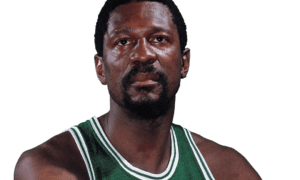Ernie McCray
EDITOR’S NOTE: Former Tucson High School and University of Arizona basketball standout Ernie McCray is a legendary figure to Tucsonans and Wildcat fans. McCray, who holds the Wildcats’ scoring record with 46 points on Feb. 6, 1960, against Cal State-Los Angeles, is the first African-American basketball player to graduate from Arizona. McCray, who now resides in San Diego, earned degrees in physical education and elementary education at Arizona. He is a longtime educator, actor and activist in community affairs in the San Diego-area. He wrote a blog for TucsonCitizen.com before the site ceased current-events operations earlier this year. He agreed to continue offering his opinion and insight with AllSportsTucson.com about Arizona Wildcats athletics. McCray also writes blogs for SanDiegoFreePress.org.
BY ERNIE McCRAY
Special to AllSportsTucson.com
I recently spent a week doing a show at the San Diego International Fringe Festival called “On the Corner of Rhythm and Rhyme” with some of the most fabulous tap dancers anyone could ever find. This spoken word/dance piece was dedicated to the creation of a reality that
“appears to the mind to be of a gentler
more caring and loving kind…”
It was written in honor of children no matter where they reside on the planet. It entertains the idea of creating a world for them that is
“without arms,
worthy of their beauty
and their charm.”
The poem speaks to a society dancing On the Corner of Rhythm and Rhyme
“to the beat of a song,
a love song.”
And this song comes from deep within our hearts and souls and it’s so strong that
“whatever apathy there was
that makes us prone
to not make our world
the world of love and harmony
it was born to be –
is gone.
Gone.
Gone.”

(Flickr creative commons photo by Esparta Palma)
And the audiences seemed to love what we had to say with our rhyming and
“tipping and tapping and patting” that came from our “feeling mighty silky slidy and glidy
and all hi-de-ho-hi-de-hi-spry-ty, in a top-hat-dancing-shoes frame of mind.”
But why does such thinking have to be an idealistic reality? What makes us as a species so unconcerned about creating a just world for everyone?
During the week of our show at the Raw Space of the Spreckels Theatre I had to struggle with images I saw from Murrieta, just an hour north of San Diego, of folks screaming “Go back home!” and “U-S-A!” to children and families caught up in the most depressing human condition one could ever imagine.
Where are these people’s empathy or sympathy for the plight of their fellow citizens of the world, a predicament connected to our government’s history in their homelands? Oh, do they have absolutely no sense of history and how what’s happened in the lower Americas has lead to what’s going on today?
Don’t they know that over time, whenever leaders in countries like Nicaragua, El Salvador, Guatemala, and Honduras entertained thoughts of making a better life for its poorer citizens, attempting to end hunger and poverty and illiteracy, the good old USA intervened and undermined and helped overthrow such ideas? “Supporting democracy” was what it was called but what it amounted to was the propagation of governments that favor U.S. political and economic interests (can we all say “IRAQ”?).
So what do our children learn from this? They learn how not to care, that’s what. And they and their peers around the world will find it very difficult to survive if they don’t learn how to respect each other. But they learn from us.
In On the Corner of Rhythm and Rhyme we temper the idealism we promote through dance and rhyme with a line that says:
“the real world did not go away
while we were at play
and that’s to say
that it’s as insane
and inane and profane
and un-tamed and unrestrained
and ungainly and zany
as it was yesterday
and up until now today…”
But we made the point that that’s okay as long as we take our better selves
“out into the world
and make it a better place
for the whole human race.
Make it refined
sublime, kind, genuine,
where the people
cooperate and re-conciliate
and appreciate
and never deviate
from the love that resides
in their hearts
for their fellow man, woman,
boy and girl…”
The Corner of Rhythm and Rhyme was held up as a place to be modeled after for the kinds of changes we need to make our world the world of love and harmony it was born to be –
“With the children in mind,
knowing that they’re watching us all the time.”
[rps-paypal]
|
|





























